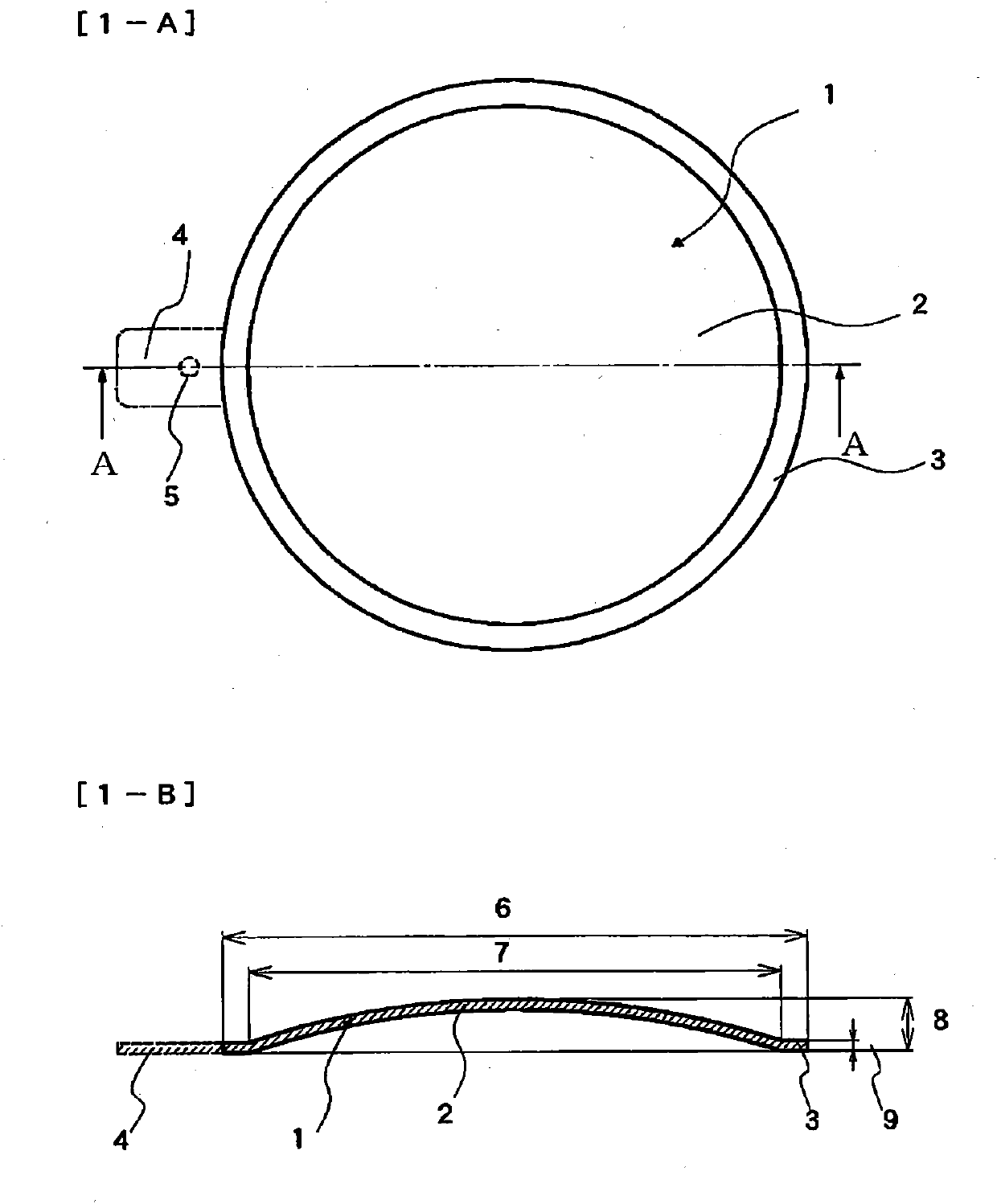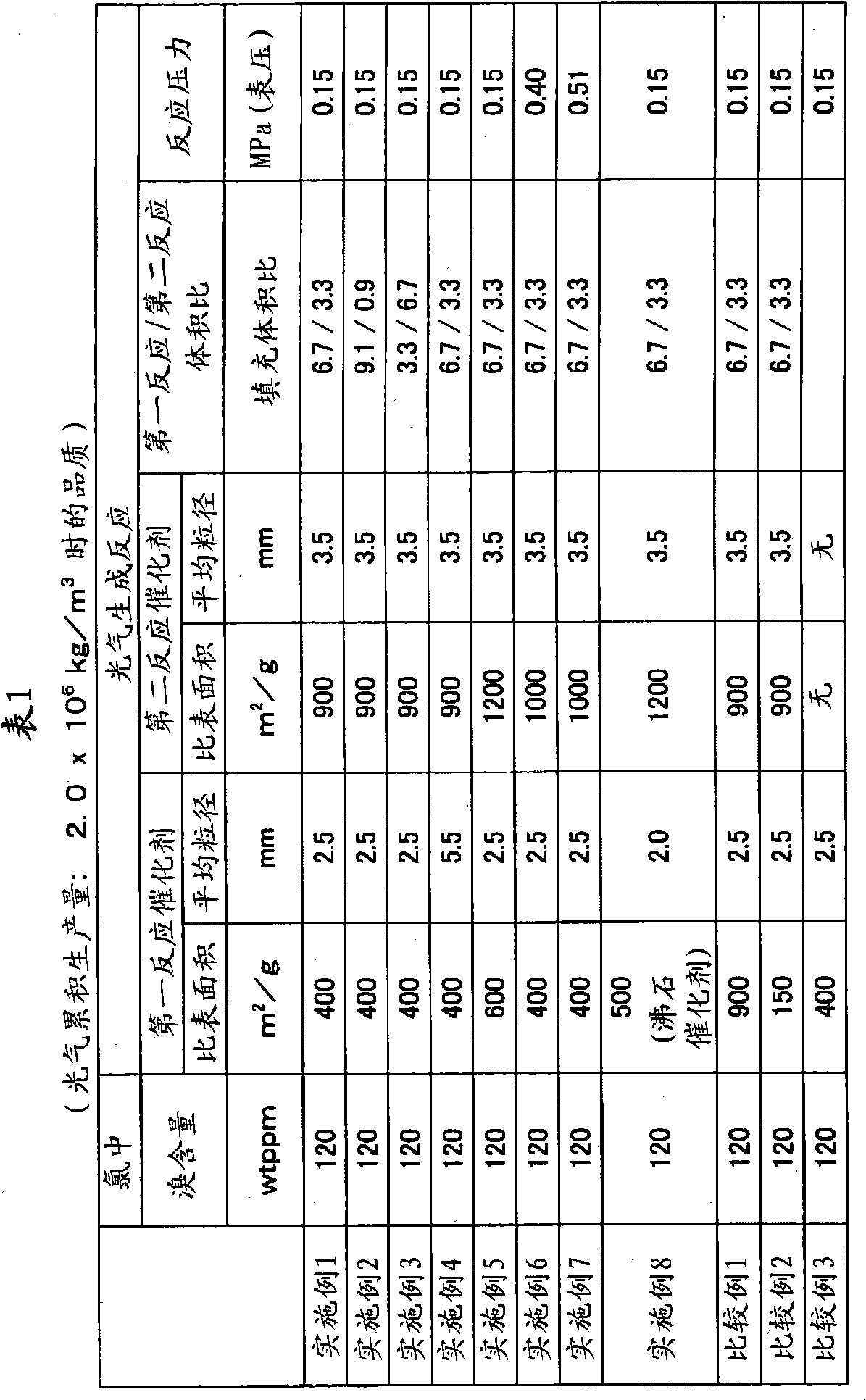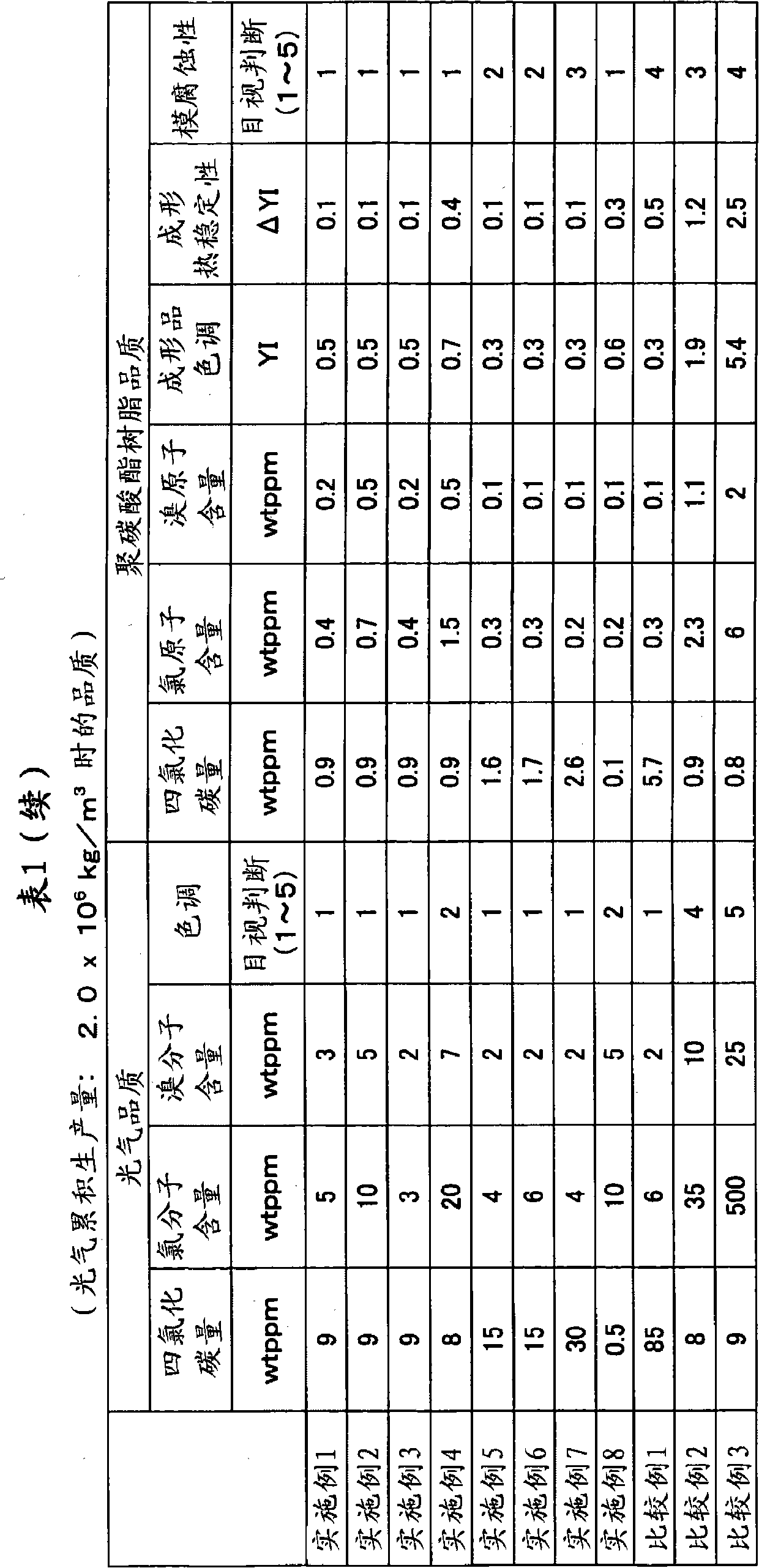Method for producing carbonyl chloride
A manufacturing method, phosgene technology, applied in the direction of carbonyl chloride, etc., can solve problems such as the method has not been made public
- Summary
- Abstract
- Description
- Claims
- Application Information
AI Technical Summary
Problems solved by technology
Method used
Image
Examples
Embodiment 1
[0162] (manufacture of phosgene)
[0163] Set up the first reaction tank, which has the function of removing the reaction heat of the multi-tube reaction tank shell side with 40 ° C cooling water for water, filling the specific surface area of 400m on the tube side 2 / g, coconut shell activated carbon (first catalyst) with an average particle diameter of 2.5mm.
[0164] The second reaction tank is installed on the downstream side of the first reaction tank, and the shell side of the multi-tubular reaction tank with the function of removing reaction heat is passed through with cooling water at 40°C, and the specific surface area of the tube side is 900m2. 2 / g, the coconut shell activated carbon (second catalyst) of average particle size 3.5mm.
[0165] On the downstream side of the second reaction tank, a condenser and a liquefied phosgene storage tank are arranged next to a -25°C brine.
[0166] These devices are connected in series, starting from the first reaction tan...
Embodiment 2
[0174] Phosgene and polycarbonate resin particles were obtained in the same manner as in Example 1, except that the filling volume ratio of the first catalyst and the second catalyst was changed to 9.1 / 0.9. Table 1 shows the evaluation results of the obtained phosgene and polycarbonate resin. Similarly, Table 2 shows the evaluation results of phosgene and polycarbonate resin after long-term operation.
Embodiment 3
[0176] Phosgene and polycarbonate resin particles were obtained in the same manner as in Example 1 except that the filling volume ratio of the first catalyst and the second catalyst was changed to 3.3 / 6.7. Table 1 shows the evaluation results of the obtained phosgene and polycarbonate resin. Similarly, Table 2 shows the evaluation results of phosgene and polycarbonate resin after long-term operation.
PUM
| Property | Measurement | Unit |
|---|---|---|
| particle size | aaaaa | aaaaa |
| particle size | aaaaa | aaaaa |
| specific surface area | aaaaa | aaaaa |
Abstract
Description
Claims
Application Information
 Login to View More
Login to View More - R&D
- Intellectual Property
- Life Sciences
- Materials
- Tech Scout
- Unparalleled Data Quality
- Higher Quality Content
- 60% Fewer Hallucinations
Browse by: Latest US Patents, China's latest patents, Technical Efficacy Thesaurus, Application Domain, Technology Topic, Popular Technical Reports.
© 2025 PatSnap. All rights reserved.Legal|Privacy policy|Modern Slavery Act Transparency Statement|Sitemap|About US| Contact US: help@patsnap.com



